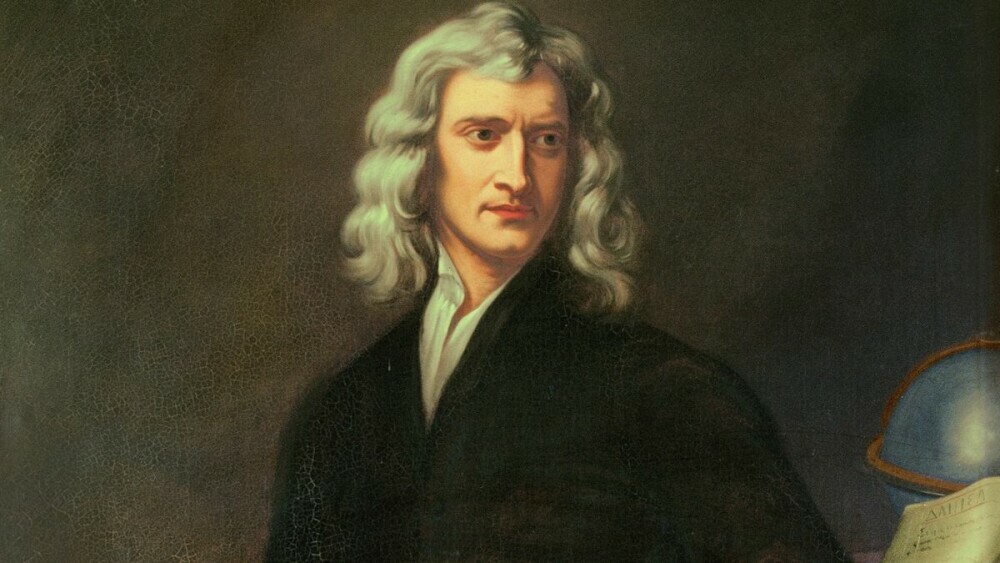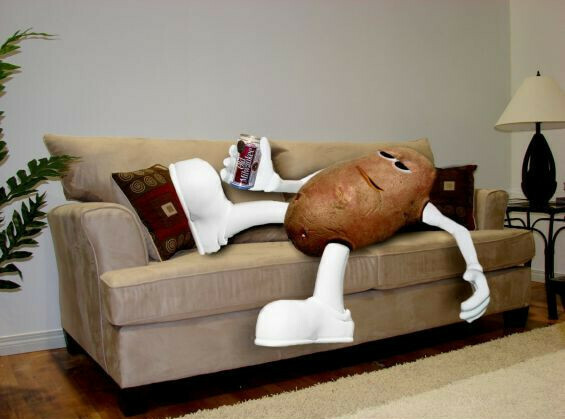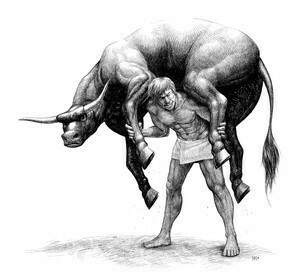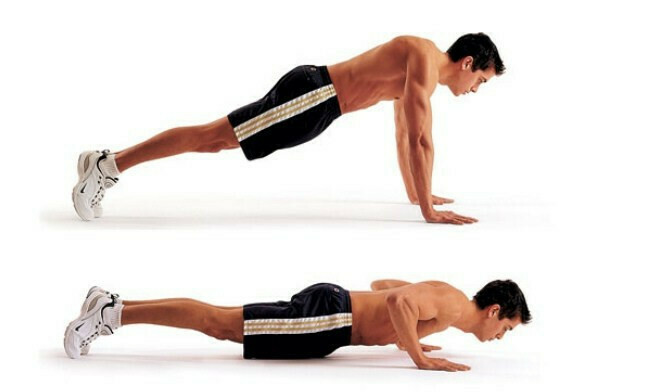GETTING SCIENTIFIC
Most of us are familiar with the picture of Sir Isaac Newton sitting beneath an apple tree with an apple falling on his head. He was a 17th century scientist, mathematician, physicist, astronomer and theologian. He is considered one of the greatest scientists of all time.
He discovered:
- The laws of motion
- Gravity
- White light and how color is created
- The law of cooling
He also invented the reflecting telescope, coins with milled edges and even cat doors.
Newton’s three laws of motion give us valuable insights into physical motion and how our exercise routines are based. This post will relate Newton’s laws of motion to our workouts and I will cite personal experiences along the way. Understanding the laws of motion as applied to exercise will help us develop more effective training routines.

FIRST LAW OF MOTION
An object at rest stays at rest and an object in motion stays in motion with the same speed and in the same direction unless acted upon by an unbalanced force.
In other words, objects tend to keep on doing what they have been doing. This is why head restraints are placed in cars – to prevent whiplash in the event of rear end collisions. When we are running, our bodies must generate enough force to overcome inertia, which is the natural tendency for an object to stay at rest. Long distance runners are then able to build up enough momentum to allow them to keep running for long periods of time.
Before I begin my morning workouts, I sometimes must overcome a deficit of energy or enthusiasm. Should I skip the workout or put it off until later in the day, knowing that it then most likely would never happen? I recently had this battle within myself. I decided to do a minimal workout with light weights and fewer reps and sets. Once I began, I developed momentum and soon was doing even more reps than usual. The workout was effective. I had set up motion and then had been guided by the momentum. The same also has happened when I decide to do 15 minutes on my treadmill and actually do 45 minutes. The dynamics change when I get started.
This is how we avoid becoming one of these. See below.

SECOND LAW OF MOTION
When force is applied to an object, it produces momentum in that object directly proportional to the amount of force. Force is the product of mass and its acceleration.
When we kick a ball, the distance the ball moves is directly related to the force of the kick. When we run facing the wind, we encounter more resistance and have a tougher (though often more effective) cardio experience.
When we lift weights, we know that our muscular contractions are programmed by our nervous systems. To show progress, we must continually increase the amount of weight or the number of reps. When the weight is too heavy, it will not move. If it is too light, our progress is limited. An understanding of Newton’s second law of motion will help us choose appropriate resistances and more effective results.
The story of Milo of Croton exactly represents building strength by progressive resistance. Milo was an Olympic wrestling champion six times in ancient Greece. His strength is legendary.
When Milo was a boy, a new calf was born near his home. According to the legend, he decided to take a walk with the calf on his shoulders. He continued doing this daily, even climbing hills while supporting the calf. After 4 years, the calf had become a bull, but Milo hardly noticed since his strength had also gradually grown.
 THIRD LAW OF MOTION
THIRD LAW OF MOTION
For every action, there is an equal and opposite reaction.
When we lift weights, the force of gravity pulls down on the weight and our muscles must generate an equal and opposite reaction to resist the force of gravity. When a swimmer pushes against the wall of a pool with his/her feet, an acceleration in the opposite direction is created. When we sit down, we exert a downward force on the chair and the chair exerts an upward force on our bodies.
This law of motion has many applications. Here are a few:
- Walking
- Pulling a resistance band
- Bouncing a ball
- Jumping on a trampoline
- A slingshot
- The recoil of a gun
- Paddling a canoe
A great example of Newton’s third law of motion for workouts is the push-up. To work our chests and triceps, we don’t always need barbells and a bench. We produce our own force as the surface we use is pushing back against us.
 EQUIPMENT
EQUIPMENT
The resistances we need for home workout routines can be quickly and reasonably found by links to companies such as Amazon, which is one of the affiliated companies I use in my articles. By showing Amazon links, I may earn commissions when the links are clicked and a purchase is made. This is the essence of affiliate marketing. See my upper menu – BECOME AN AFFILIATE MARKETER – for information on this process.
Amazon links provide detailed information, pictures, prices, reviews and links to other similar items at different price points. Click on the links and then scroll around.
- Resistance bands with handles – for full body workouts. Note the discount.
- Push-up board – for deeper push-ups and selection of the muscle being trained.
- Adjustable dumbbells – lots of resistance within a small space
- Whey protein powder – for optimal muscle support and recovery
Dick’s Sporting Goods has been my favorite source for athletic equipment for several decades. I am now an associate of this dynamic company. DSG is now showing discounts such as 50% off on select fitness equipment and gear. See my link at the side of my website.
- Click on the red link
- See the message “What are you looking for?”
- Proceed from there
Bullworker Fitness is another affiliated company and a top source for high quality workout tools, applicable to both isotonic and isometric modes of training. I have used the Bullworker Steel Bow and Bow Classic for years. The Bullworker equipment is easily portable when we travel and need a workout option. Click on the red link at the side of my website for direct access to their website.
FINAL THOUGHTS
Sir Isaac Newton (i643-1727) was influenced by Galileo and he in turn influenced Einstein. Before doing some research, I was not fully aware of how his laws of motion directly affect how we use weights to train our bodies. Breaking down these laws to their applications to exercise has been enjoyable.
The legend of Milos of Croton, though at least partially mythical, was especially interesting to me.
Please leave me any comments or questions in the “Comments” section below.
Let’s be well and stay healthy!
Hey Richard!
I recently read your article, “Applying Newton’s Laws to Weight Training,” and I have to say, it was a real eye-opener. The way you combine physics with weight training is not only smart but also incredibly practical. It’s like you cracked a code that most people didn’t even know existed.
Thanks for sharing your unique perspective on weight training. It’s given me a new way to look at my workouts, and I think it’ll do the same for a lot of other readers. I can’t wait to see what you write about next. Keep up the great work!
Hi Eric! Thanks for your kind words. I did research on the connection of Newton’s laws of motion and the application to workouts jumped out to me. Momentum seems to be the key factor. I was even tired when I was halfway through this article and the momentum of writing helped me finish this morning. Please keep in touch.